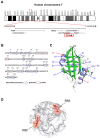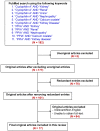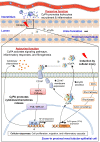Current update on theranostic roles of cyclophilin A in kidney diseases
- PMID: 35673572
- PMCID: PMC9169364
- DOI: 10.7150/thno.72948
Current update on theranostic roles of cyclophilin A in kidney diseases
Abstract
Cyclophilin A (CyPA) or peptidylprolyl isomerase A (PPIA), an immunophilin with peptidyl-prolyl cis/trans isomerase (PPIase) activity, is an abundant cellular protein widely expressed across various cell types and tissues, including the kidney. Expression of CyPA in the kidney is relatively higher in proximal tubular epithelial cells than others along the nephron. Alterations in expression and secretion of CyPA play important roles in physiological processes and pathophysiology of several diseases affecting the kidney. Herein, we provide a brief overview of CyPA structural biology and present the current update on its theranostic roles in various kidney diseases, including diabetic nephropathy, acute kidney injury, chronic kidney disease, renal fibrosis, and nephrotoxicity associated with organ transplantation. Notably, the diagnostic/prognostic role for urinary CyPA in several of these kidney diseases is promising. Finally, future perspectives on the CyPA research, especially targeting CyPA for therapeutics, are discussed. A comprehensive understanding of the theranostic roles of CyPA in kidney diseases is expected to provide novel insights into the design of new therapeutic interventions and prevention strategies.
Keywords: AKI; Biomarker; CKD; Diabetic nephropathy; Nephrotoxicity; PPIA; Renal fibrosis; Therapeutics.
© The author(s).
Conflict of interest statement
Competing Interests: The authors have declared that no competing interest exists.
Figures




Similar articles
-
Transgenic mice overexpressing cyclophilin A are resistant to cyclosporin A-induced nephrotoxicity via peptidyl-prolyl cis-trans isomerase activity.Biochem Biophys Res Commun. 2004 Apr 16;316(4):1073-80. doi: 10.1016/j.bbrc.2004.02.160. Biochem Biophys Res Commun. 2004. PMID: 15044094
-
Peptidylprolyl cis/trans isomerase activity and molecular evolution of vertebrate Cyclophilin A.Yi Chuan. 2016 Aug;38(8):736-45. doi: 10.16288/j.yczz.15-523. Yi Chuan. 2016. PMID: 27531612
-
Cyclophilin A Promotes Inflammation in Acute Kidney Injury but Not in Renal Fibrosis.Int J Mol Sci. 2020 May 22;21(10):3667. doi: 10.3390/ijms21103667. Int J Mol Sci. 2020. PMID: 32455976 Free PMC article.
-
Cyclophilin A/CD147 Interaction: A Promising Target for Anticancer Therapy.Int J Mol Sci. 2022 Aug 19;23(16):9341. doi: 10.3390/ijms23169341. Int J Mol Sci. 2022. PMID: 36012604 Free PMC article. Review.
-
Cyclophilin A: promising target in cancer therapy.Cancer Biol Ther. 2024 Dec 31;25(1):2425127. doi: 10.1080/15384047.2024.2425127. Epub 2024 Nov 8. Cancer Biol Ther. 2024. PMID: 39513594 Free PMC article. Review.
Cited by
-
Urinary cyclophilin A as an early marker of chronic kidney disease with underlying type 2 diabetes.Sci Rep. 2024 Oct 5;14(1):23207. doi: 10.1038/s41598-024-73994-5. Sci Rep. 2024. PMID: 39369057 Free PMC article.
-
Peptidylprolyl isomerase A guides SENP5/GAU1 DNA-lncRNA triplex generation for driving tumorigenesis.Nat Commun. 2024 Oct 21;15(1):9068. doi: 10.1038/s41467-024-53493-x. Nat Commun. 2024. PMID: 39433793 Free PMC article.
-
14-3-3ζ: an optimal housekeeping protein for western blot analysis in swine rotator cuff tendon studies.Mol Cell Biochem. 2025 Jul;480(7):4355-4363. doi: 10.1007/s11010-025-05255-6. Epub 2025 Mar 23. Mol Cell Biochem. 2025. PMID: 40121578 Free PMC article.
-
Identification of Key Genes and Potential Therapeutic Targets in Sepsis-Associated Acute Kidney Injury Using Transformer and Machine Learning Approaches.Bioengineering (Basel). 2025 May 16;12(5):536. doi: 10.3390/bioengineering12050536. Bioengineering (Basel). 2025. PMID: 40428155 Free PMC article.
-
Repurposing fexofenadine as a promising candidate for diabetic kidney disease: randomized clinical trial.Int Urol Nephrol. 2024 Apr;56(4):1395-1402. doi: 10.1007/s11255-023-03804-w. Epub 2023 Sep 23. Int Urol Nephrol. 2024. PMID: 37741921 Free PMC article. Clinical Trial.
References
-
- Fischer G, Bang H, Mech C. Determination of enzymatic catalysis for the cis-trans-isomerization of peptide binding in proline-containing peptides. Biomed Biochim Acta. 1984;43:1101–11. - PubMed
-
- Handschumacher RE, Harding MW, Rice J, Drugge RJ, Speicher DW. Cyclophilin: a specific cytosolic binding protein for cyclosporin A. Science. 1984;226:544–7. - PubMed
-
- Fischer G, Wittmann-Liebold B, Lang K, Kiefhaber T, Schmid FX. Cyclophilin and peptidyl-prolyl cis-trans isomerase are probably identical proteins. Nature. 1989;337:476–8. - PubMed
Publication types
MeSH terms
Substances
LinkOut - more resources
Full Text Sources

